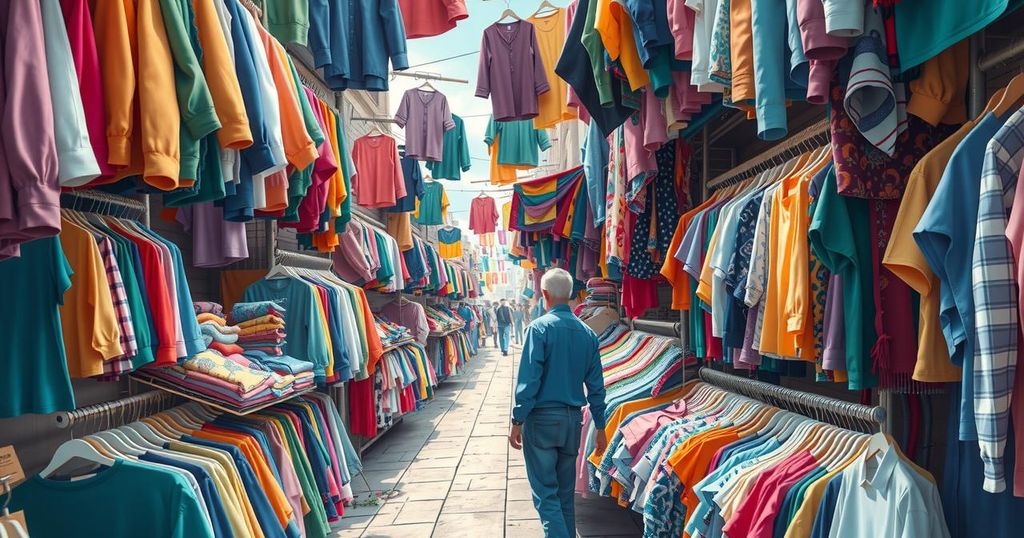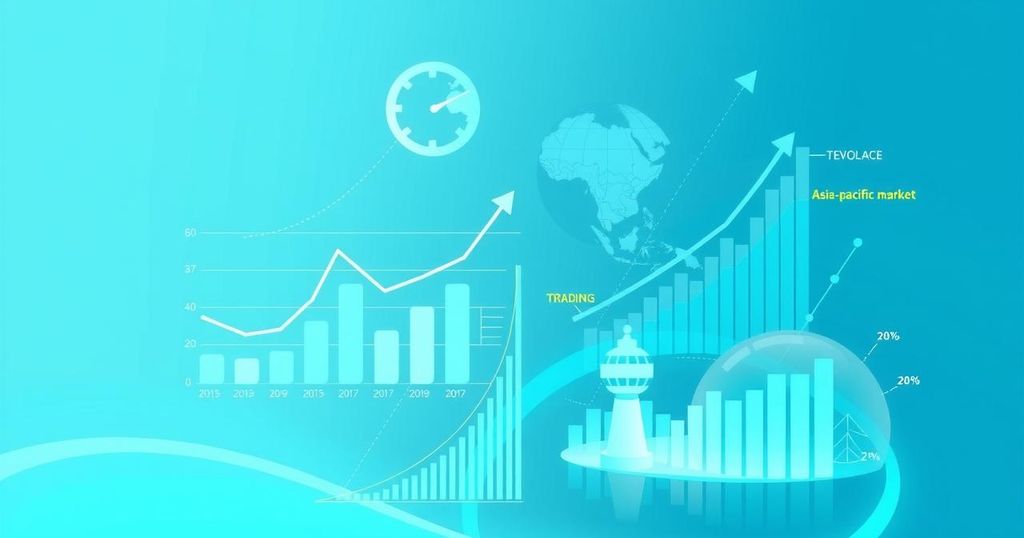Kenya’s Mitumba Market: Growth Driven by Policy Changes and Demand
Kenya has become Africa’s largest importer of second-hand clothes, with imports valued at $298 million in 2023. This represents a 12.45% increase from 2022 and highlights a reliance on affordable clothing. Policy changes, including tax removals, have made imports cheaper, while neighboring countries enforce stricter regulations. The debate over the effects of mitumba on local industry remains contentious, even as government efforts to bolster textile production progress.
Recent data from the Massachusetts Institute of Technology (MIT) indicates that Kenya imported mitumba, or second-hand clothes, valued at $298 million (Sh38.5 billion) in 2023. This figure surpasses Nigeria’s imports, showcasing Kenya as the leading importer of used apparel in Africa despite its smaller population. The increase reflects a substantial 12.45 percent rise from the previous year’s $265 million (Sh34.28 billion), highlighting a growing reliance on affordable clothing options among Kenyans.
The sharp rise in mitumba imports signals increasing demand, as traders bring a diverse array of second-hand items such as underwear, trousers, dresses, jackets, shoes, and household textiles into the country. In stark contrast, neighboring nations such as Uganda, Rwanda, and Ethiopia have opted for restrictions to bolster their local textile industries, further emphasizing Kenya’s unique position in the mitumba market.
In 2022, Kenya’s imports were nearly on par with Nigeria, but recent trends demonstrate a decisive increase, largely influenced by significant policy changes at the national level. The removal of key taxes, including the Import Declaration Fees (IDF) and the Railway Development Levy (RDL), through the Tax Laws (Amendment) Act, 2024, has rendered mitumba imports even more affordable, although this decision has garnered criticism from domestic manufacturers.
Amidst this growing market, other East African Community (EAC) members have tightened regulations. For instance, nations like Rwanda have implemented higher tariffs on used clothing despite pressure from the United States, a major supplier of mitumba. Concerns have also arisen within Kenya’s Trade Ministry regarding potential smuggling, as a portion of imports is believed to be diverted to other countries, complicating the regulatory landscape.
Kenya’s position in the African Growth and Opportunity Act (AGOA) is paramount, as it permits duty-free access to the U.S. for countries exporting textiles. Kenya’s continued participation is contingent on maintaining access to second-hand clothing, which puts it at odds with other nations that have banned such imports, like Ethiopia and Uganda. This precarious balance reflects a broader debate on the impact of mitumba on local economic stability and job creation.
The dialogue surrounding mitumba has polarized policymakers between viewing it as essential for low-income families and recognizing its detrimental effects on the local textile industry. Continuous attempts to revitalize this sector have yielded limited results, despite initiatives like the previous Jubilee government’s focus on a comprehensive recovery strategy and the current Kenya Kwanza administration’s value chain improvements.
Notably, projects aimed at strengthening local textile production such as the modernization of Rivatex East Africa have been initiated, with the government investing heavily to enhance operations. The National Cotton, Textile, and Apparel (CTA) Policy 2024 has also been introduced to bolster the local textile value chain, featuring provisions for establishing value-addition centers and building new ginneries to foster production expansion.
In addition to these efforts, the government is empowering county industrial development centers with resources to support small enterprises. An international campaign to promote Kenyan textiles is also in the pipeline, addressing unfair trade practices and enhancing competitiveness within the sector.
Kenya’s mitumba market has seen significant growth, driven by policy shifts and rising demand for affordable clothing. With imports surpassing those of larger nations, Kenya has established itself as Africa’s leading importer of second-hand clothes. Efforts to revitalize the local textile industry continue amid ongoing debates regarding the impact of imported clothing on domestic production and employment. Government initiatives are aimed at strengthening the textile value chain, supporting local farmers, and promoting Kenyan-made apparel as a response to the challenge posed by mitumba.
Original Source: eastleighvoice.co.ke




Post Comment